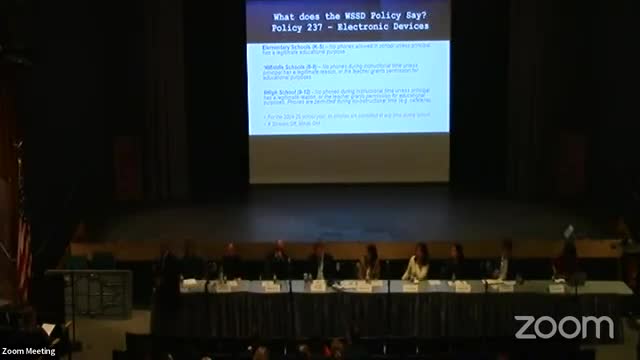Experts warn of mental health crisis linked to smartphones
October 30, 2024 | Wallingford-Swarthmore SD, School Districts, Pennsylvania
This article was created by AI summarizing key points discussed. AI makes mistakes, so for full details and context, please refer to the video of the full meeting. Please report any errors so we can fix them. Report an error »

In a recent government meeting, educators and health professionals discussed the growing concerns surrounding cell phone use among students, particularly its impact on mental health and social skills. The meeting highlighted the strict policies in place regarding phone usage in schools, with elementary schools largely prohibiting phones, while middle and high schools allow them only under specific circumstances, such as for educational purposes.
Dr. Lane Whitaker, a panelist, emphasized the alarming rise in anxiety and depression among teenagers, linking these issues to both smartphone and social media usage. He noted a significant shift in behavior patterns since 2010, coinciding with the rise of smartphones and social media platforms like Instagram. Whitaker reported a staggering 134% increase in self-harm and suicide attempts among girls aged 10 to 17 since 2012, with boys also experiencing a notable rise in mental health issues.
The discussion also touched on the detrimental effects of constant connectivity, including social isolation and a decline in face-to-face communication skills. Whitaker pointed out that many teenagers now prefer texting over direct interaction, which has led to a loss of essential social skills. He remarked on the pervasive nature of phones in daily life, suggesting that even family interactions, such as dinner time, are often disrupted by device usage.
Dr. Kenny, another panelist, reinforced these concerns by discussing the physical health implications of excessive screen time, particularly sleep disturbances caused by blue light exposure. He noted that the habitual checking of phones can disrupt sleep patterns, further exacerbating mental health issues.
The meeting underscored the urgent need for awareness and intervention regarding the effects of technology on youth, as educators and health professionals continue to navigate the challenges posed by the digital age.
Dr. Lane Whitaker, a panelist, emphasized the alarming rise in anxiety and depression among teenagers, linking these issues to both smartphone and social media usage. He noted a significant shift in behavior patterns since 2010, coinciding with the rise of smartphones and social media platforms like Instagram. Whitaker reported a staggering 134% increase in self-harm and suicide attempts among girls aged 10 to 17 since 2012, with boys also experiencing a notable rise in mental health issues.
The discussion also touched on the detrimental effects of constant connectivity, including social isolation and a decline in face-to-face communication skills. Whitaker pointed out that many teenagers now prefer texting over direct interaction, which has led to a loss of essential social skills. He remarked on the pervasive nature of phones in daily life, suggesting that even family interactions, such as dinner time, are often disrupted by device usage.
Dr. Kenny, another panelist, reinforced these concerns by discussing the physical health implications of excessive screen time, particularly sleep disturbances caused by blue light exposure. He noted that the habitual checking of phones can disrupt sleep patterns, further exacerbating mental health issues.
The meeting underscored the urgent need for awareness and intervention regarding the effects of technology on youth, as educators and health professionals continue to navigate the challenges posed by the digital age.
View full meeting
This article is based on a recent meeting—watch the full video and explore the complete transcript for deeper insights into the discussion.
View full meeting